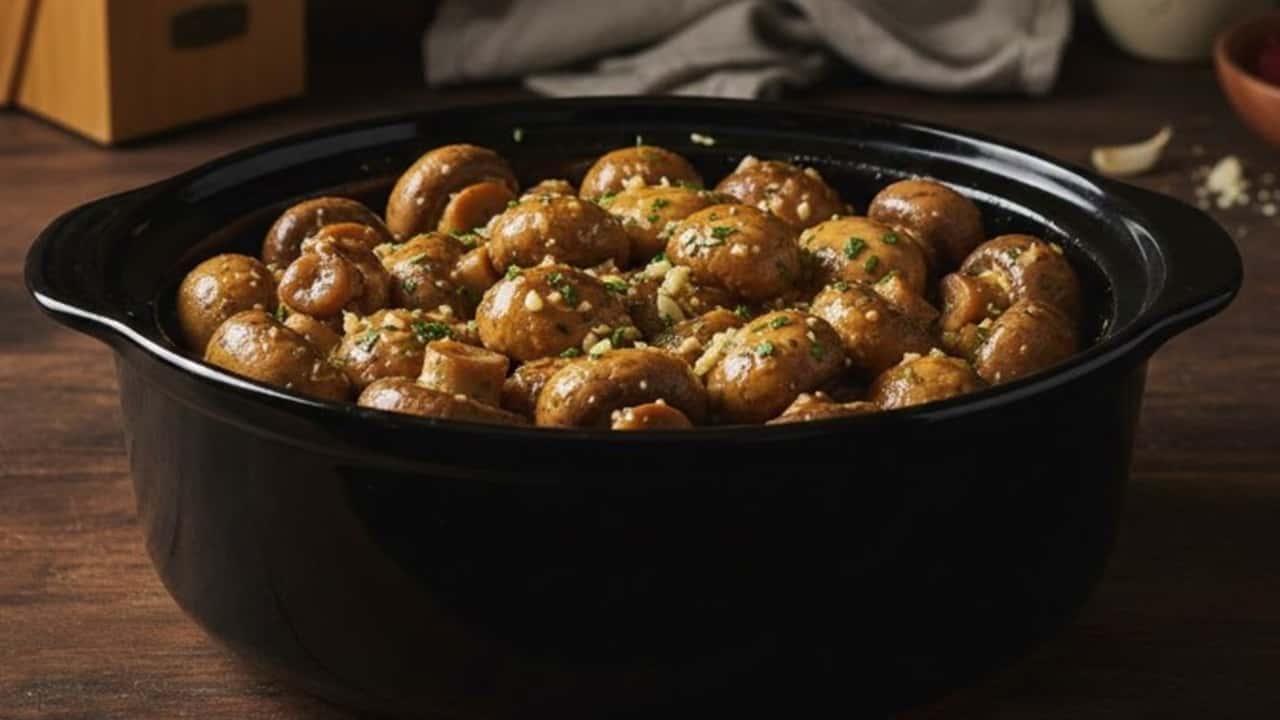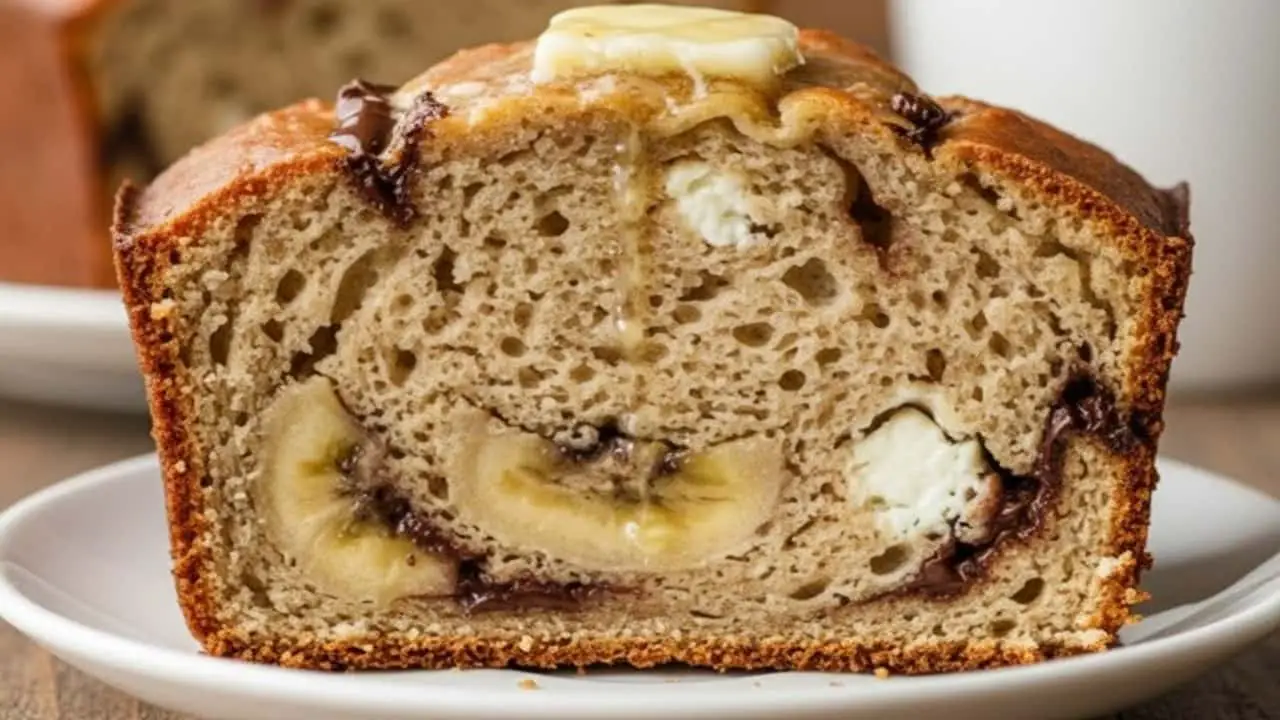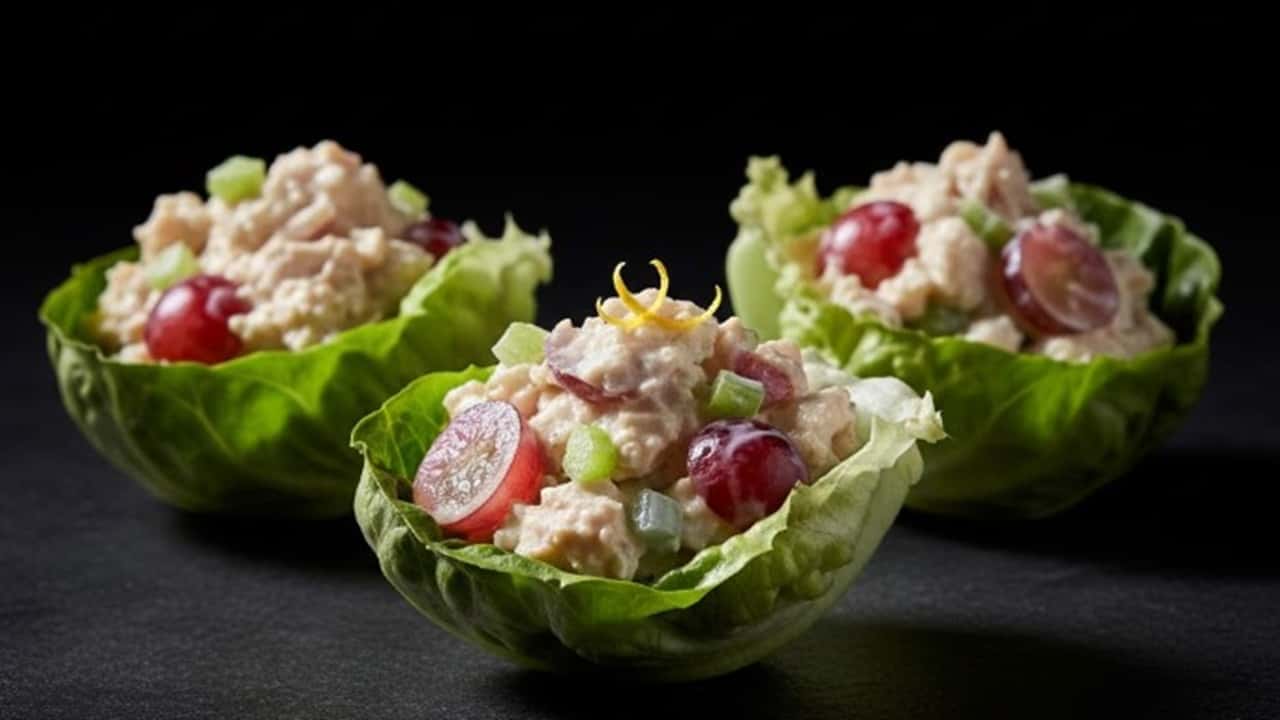Today I am thrilled to take you on a foodie excursion where the vibrant spices of India dance with the umami-rich flavors of Korea.
As someone who loves food, I’ve discovered that these two rich culinary traditions, when thoughtfully combined, create something extraordinarily special.
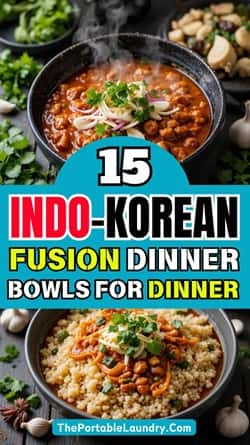
In this collection of 15 innovative Indo-korean fusion dinner recipes, you’ll discover how gochujang adds depth to classic dal, how kimchi transforms biryani, and how Korean rice cakes find a new home in creamy makhani sauce.
Each recipe has been carefully crafted to honor both culinary traditions while creating exciting new flavor profiles that will revolutionize your dinner table.
From Kimchi Biryani Bowl to Japchae Shahi Korma, these dishes represent the future of fusion cuisine.
Affiliate Disclosure: This blog post contains affiliate links, meaning we may earn a small commission if you decide to make a purchase through them – at no additional cost to you. Your support helps keep our content flowing and the site thriving.
1. Kimchi Biryani Bowl
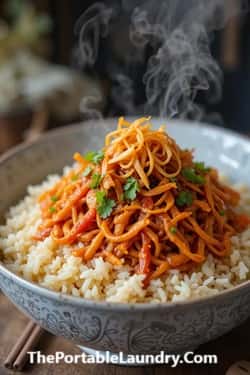
This bold fusion combines the fermented kick of kimchi with fragrant biryani rice.
Start by tempering whole spices (cardamom, cloves, cinnamon) in ghee, then add finely chopped kimchi and sauté until fragrant.
Layer partially cooked basmati rice (use a quality rice cooker like Cuckoo rice cooker for perfect results) with this mixture, adding gochugaru and garam masala between layers.
The key is balancing the kimchi’s tang with traditional biryani spices. Steam until done, then garnish with kimchi oil-fried onions and cilantro. The result? A mind-blowing combination of familiar Indian aromatics with Korean umami depth.
2. Bulgogi Masala Dosa

Reimagine the classic masala dosa with Korean-style bulgogi filling.
Marinate thinly sliced beef in a blend of soy sauce, ginger-garlic paste, garam masala, and pear purée (traditional Korean tenderizing ingredient).
Cook the marinated meat with caramelized onions and green chilies.
Spread your fermented dosa batter (Use pre-fermented dosa batter for consistent results) into a crispy crepe, add the bulgogi filling, and serve with both coconut chutney and gochujang-spiked sambar.
3. Gochujang Dal Tadka
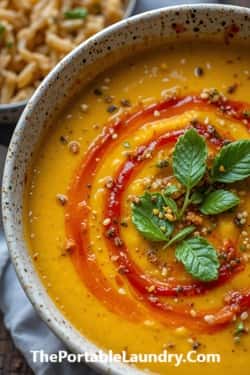
Transform regular dal tadka by incorporating gochujang paste.
Cook red lentils with turmeric and salt until soft.
For the tadka, bloom cumin seeds in ghee, add garlic, and whisk in gochujang paste.
This creates a complex, spicy-umami layer that elevates the humble dal.
Finish with curry leaves and a drizzle of sesame oil. Serve with jeera rice or kimchi rice for an extra Korean touch.
4. Doenjang-Butter Chicken
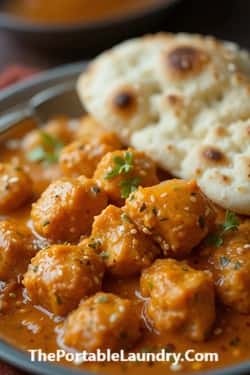
Reinvent butter chicken by adding Korean fermented soybean paste (doenjang) to the gravy.
Marinate chicken in yogurt and tandoori spices overnight.
For the sauce, saute onions, tomatoes, and cashews with butter, then blend smooth.
Add cream, doenjang, and your marinated chicken.
The doenjang adds an incredible depth that complements the traditional butter chicken flavors. Finish with a touch of honey and butter.
Serve with naan brushed with sesame oil and sprinkled with toasted sesame seeds.
5. Seoul Street Curry Ramen

Transform your dinner ramen experience by combining the richness of Indian curry with Korean ramen elements.
Create a base broth by simmering onions, ginger, and garlic with gochugaru and curry powder.
Add coconut milk, red curry paste, and Korean anchovy stock (myeolchi dasida).
Cook your premium ramen noodles in this fragrant broth.
Top with butter-masala corn, soft-boiled egg marinated in soy sauce, crispy curry leaves, and a drizzle of chili oil. The combination creates a creamy, spicy fusion that’s both comforting and exciting.
6. Tandoori Kalbi with Mint-Sesame Chutney
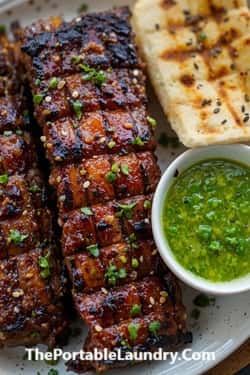
Give Korean short ribs an Indian tandoori twist.
Marinate beef kalbi in a mixture of yogurt, tandoori masala, gochujang, and grated Asian pear for 24 hours.
Grill until charred and tender and then serve with a fusion mint chutney made with fresh mint, cilantro, green chilies, sesame oil, and toasted sesame seeds.
Pair with grilled naan brushed with sesame oil and sprinkled with nigella seeds.
The combination of tandoori spices and Korean barbecue flavors creates an unforgettable dining experience.
7. Samgyeopsal Masala Curry
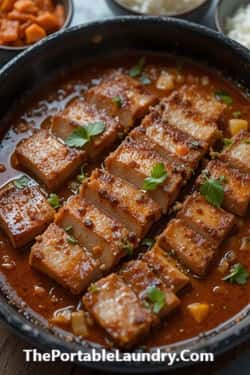
Reimagine Korean pork belly in an Indian curry avatar.
Pan-sear thick slices of samgyeopsal until golden, then set aside.
Create a rich gravy by sautéing onions, tomatoes, and whole spices, adding both garam masala and doenjang for depth.
Simmer the pork in this sauce until tender.
Finish with cream and a touch of soju for complexity.
Garnish with perilla leaves and curry leaves followed by serving with both kimchi and raita for a perfect temperature and flavor balance.
8. Bibimbap Pulao

Create a stunning fusion rice dish by combining the concepts of Korean bibimbap with Indian pulao.
Cook aromatic basmati rice with whole spices and a splash of sesame oil.
Separately prepare Korean-style vegetables: soy-glazed mushrooms, gochugaru-spiced spinach, and julienned carrots with cumin.
Layer the rice with these vegetables, add gochujang-spiced ground lamb, and top with a fried egg.
Garnish with toasted sesame seeds and crispy fried shallots. Serve with both gochujang sauce and mint chutney.
9. Korean Fried Chicken Tikka

Give chicken tikka a Korean-style crispy makeover.
Marinate chicken pieces in yogurt, tikka masala spices, and gochugaru overnight.
Double-fry the marinated chicken (using a quality deep fryer for consistent temperature) until super crispy.
Toss in a sauce combining gochujang, honey, butter chicken gravy, and a touch of curry leaves.
Garnish with sesame seeds and cilantro. Serve with butter naan and pickled radish for a perfect blend of Indian and Korean flavors.
10. Galbi Vindaloo
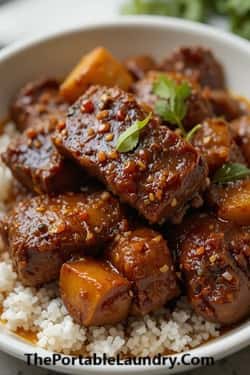
Reinvent traditional vindaloo with Korean-style short ribs.
Create a fiery marinade by blending Kashmiri chilies, garlic, ginger, vinegar, and gochujang paste.
Layer this with classic vindaloo spices and palm vinegar and marinate the galbi overnight
Slow-cook until the meat falls off the bone, adding potatoes traditionally used in vindaloo.
The Korean pear in the marinade naturally tenderizes the meat while adding subtle sweetness.
Finish with a tempering of curry leaves and sesame oil.
The result is a perfect balance of Goan heat and Korean barbecue flavors.
11. Tteokbokki Makhani
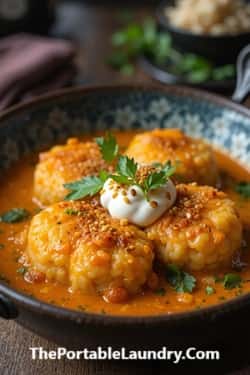
Transform butter chicken sauce by incorporating Korean rice cakes.
Start with a classic makhani gravy: tomatoes, cashews, butter, and cream.
Add gochujang and doenjang for depth.
Separately, pan-fry cylinder-shaped tteok until golden brown.
Simmer the rice cakes in the makhani sauce until they absorb the flavors while maintaining their chewy texture.
Garnish with fresh cream, crispy curry leaves, and toasted sesame seeds.
The chewy rice cakes provide an exciting textural contrast to the rich, creamy sauce.
12. Sundubu Palak Paneer
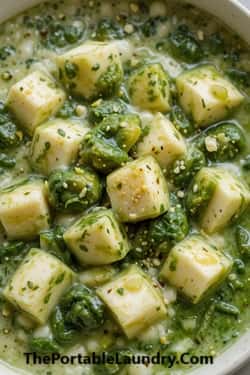
Blend Korean soft tofu stew with Indian palak paneer.
Begin by wilting spinach with garlic and ginger, then blend until smooth.
Create a base with gochugaru, Indian spices, and anchovy stock.
Add both soft tofu and pan-fried paneer cubes.
The soft tofu adds silkiness while paneer provides texture.
Finish with a mild garnishing of cream and sesame oil and then serve this dish with steamed rice.
The combination creates a uniquely textured dish that’s both comforting and nutritious.
13. Jeyuk Keema
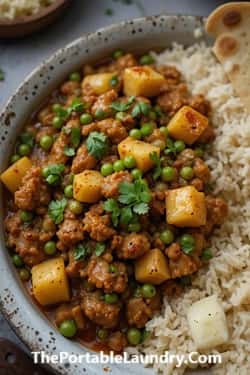
Stir-fry ground pork with a paste made from onions, ginger, garlic, and both gochujang and garam masala.
Add green peas and diced potatoes traditionally found in keema.
The sauce should be a perfect balance of Korean and Indian spices.
Finish with perilla leaves and cilantro and serve with both rice and buttery naan. This fusion creates a bold, spicy dish that works perfectly for family dinners.
14. Samgyetang Biryani

Combine Korean ginseng chicken soup with fragrant biryani.
Marinate whole small chickens in yogurt and biryani spices.
Stuff with glutinous rice, ginseng, jujubes, and garlic – traditional samgyetang ingredients.
Layer with partially cooked basmati rice, saffron, and fried onions and steam until done.
The ginseng adds a unique medicinal note to the aromatic biryani.
Serve with both kimchi and raita for a complete meal.
15. Japchae Shahi Korma
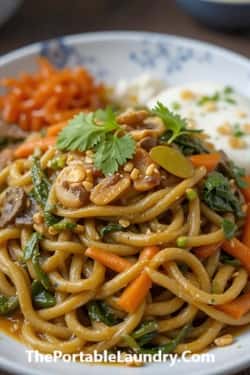
Transform the traditional shahi korma by incorporating the beloved Korean glass noodle dish.
Start by soaking sweet potato noodles (dangmyeon) in warm water until pliable.
Meanwhile, create a rich korma base by blending cashews, almonds, and poppy seeds with cream until silky smooth.
Saute onions until golden, add ginger-garlic paste, and bloom your korma spices (cardamom, cinnamon, cloves) in ghee.
Add the cream mixture and simmer.
Separately, stir-fry your dangmyeon with julienned carrots, mushrooms, and spinach in sesame oil – traditional japchae vegetables.
Once the korma sauce is rich and thick, combine it with the stir-fried noodles and vegetables.
The sweet potato noodles absorb the korma’s richness while maintaining their signature chewy texture.
Finish with a garnish of toasted nuts, freshly chopped cilantro, and a drizzle of sesame oil.
The result is a luxurious fusion dish where the korma’s richness complements the japchae’s diverse textures.
Serve hot, with a side of kimchi raita for temperature and flavor balance.
Final Thoughts
Whether you start with the simple Seoul Street Curry Ramen or dive into the more complex Samgyetang Biryani, each dish offers an opportunity to expand your culinary horizons.
The key to success with these fusion recipes is to taste as you go, trust your instincts, and don’t be afraid to adjust the spice levels to your preference.
After all, the best fusion cooking happens when you make it your own.
These fifteen dishes are just the beginning – they’re your invitation to explore, experiment, and create your own cross-cultural culinary masterpieces.
